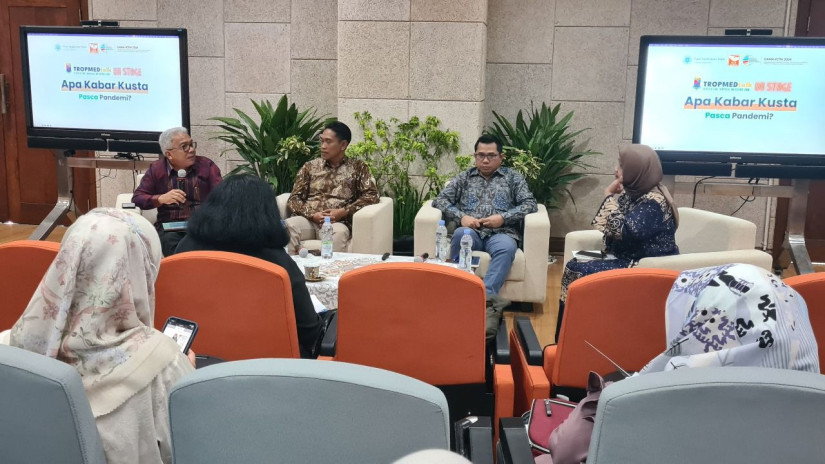
Indonesia ranks third as the country with the highest burden of leprosy cases in the world. Although relatively rarely heard by some people, leprosy is among the neglected tropical diseases.
Leprosy is an infectious and contagious disease caused by the mycobacterium leprae bacterium. This bacterium can be transmitted through direct contact with patients and through respiration with an incubation period of 2-5 years after the bacterium enters the body.
However, the most feared aspect of leprosy is the occurrence of disabilities in patients. Therefore, efforts to find leprosy patients before they experience disabilities are a crucial step in the eradication of leprosy in the country.
This issue was raised in a talk show titled “How is Leprosy Post-Pandemic?” on Wednesday (May 15) at the UGM Faculty of Medicine, Public Health, and Nursing (FK-KMK UGM).
The talk show, organized by the UGM Center for Tropical Medicine in collaboration with NLR Indonesia, featured speakers from figures involved in leprosy management.
In addition to stakeholders, researchers, practitioners from non-government organizations (NGOs), and people who have experienced leprosy (OYPMK) were also present.
The Head of the Neglected Tropical Disease (NTDs) Task Force from the Indonesian Ministry of Health, Regina T Sidjabat, MD, stated that if detected early and treated promptly and thoroughly, leprosy can be cured entirely without leaving disabilities.
Efforts are being made to find patients as a primary strategy and intervention towards eliminating leprosy in Indonesia.
“The discovery of leprosy cases must involve all parties, including stakeholders, community leaders, and religious figures,” she said.
Executive Director of NLR Indonesia, Agus Wijayanto, mentioned that many leprosy patients still face stigma. This affects other aspects of their lives, including their livelihoods. Cross-sectoral advocacy is also needed to eliminate stigma.
“Admitting to having leprosy is burdensome,” said Agus Wijayanto.
Ahmad Idris Afandi revealed the continued negative stigma towards leprosy patients in society. As an OYPMK, he and his organization, Sahabat Pendamping Indramayu, educate communities at the grassroots level.
He often receives information about leprosy patients, including children and their families, becoming victims of stigma from their neighbors.
“We go door-to-door around leprosy patients’ homes to educate,” Afandi said.
Dr. Astri Ferdiana, MD, a researcher at the UGM Center for Tropical Medicine who hosted the talk show, emphasized that combating leprosy must be accompanied by efforts to eliminate stigma against patients. She hopes the public becomes more aware and well-educated that leprosy still exists in society and should not be neglected.
Dr. Ferdiana also appreciated the hard work carried out by NLR Indonesia, which has been involved in leprosy management and its consequences since 1975. The approach includes three aspects: zero transmission, zero disability, and zero exclusion.
She mentioned that the UGM Center for Tropical Medicine addresses diseases classified as NTDs. The NTDs group is one of the six working groups at the UGM center.
“Last year, the Center for Tropical Medicine actively participated in drafting the National Action Plan for Leprosy Elimination 2023-2027,” she said.
Author: Gusti Grehenson

